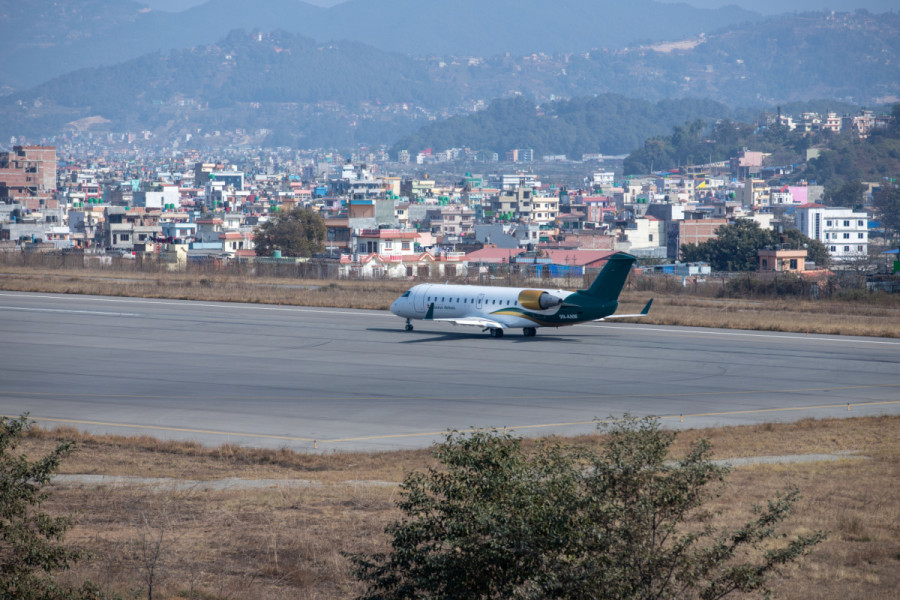Columns
Ghost airports: Lessons for Nepal
Out of 55 airports in Nepal, 19 are not in operation, and only a handful are self-sustaining.
Mukesh Dangol
There are many instances around the world where an airport bites the dust and the big hunks of concrete take a ghostly turn. Airports are strategic infrastructures that are capital-intensive, technology-oriented and often cover a huge land area. They require constant adaptation to provide enough functional, safe and affordable services for airlines and passengers. If not, they would not be able to realise the traffic they hoped for. Subsequently, they can turn into facilities that may be fully operational but devoid of any passengers or traffic. In the worst case scenario they turn into so-called ghost airports.
Airports are intended to boost local and regional economies but fail to attract airlines to operate to/from these airports. Several reasons exist: Conflicts, war, poor planning, environmental issues and/or under-demand destinations. Ciudad Real Airport (CQM) in Spain is one such airport which could not operate successfully as planned. Initially built as an alternative to Madrid Barajas Airport (MAD) with a huge investment of over $1 billion and a capacity of handling 2.5 million passengers annually, the airport declared bankruptcy in 2010, three years after commencement. Poor planning with overlooking deficiencies, availability of competitive airports nearby and economic factors (co-incidence of airport operation and financial crisis in Spain) are said to be reasons behind its unsuccessful operation.
Another classic case is the ambitious plan of Mattala Rajapaksa International Airport (MRIA) in Sri Lanka. Launched in March 2013 with an annual capacity of 1 million passengers, this airport initially witnessed several airline operations, including its national flag carrier—Sri Lankan Airlines. However, owing to low demand, airlines and airports incurred huge losses. The airport could not attract more airlines for continuous operation; by 2018, almost all airlines had aborted flights. It soon turned into a ‘white elephant’ for the Sri Lankan government as it incurred consistent losses. Moreover, it could not generate enough revenue to pay back the $190 million loan provided by the Exim Bank of China for its construction. The airport has been dubbed “The World’s Emptiest International Airport” by Forbes, thanks to its minimal flight operations despite its size and capability.
There are various arguments and reasons for its failure, including the airport’s site in a suburb area, lack of proper local support, unavailability of other infrastructures (public road transport linking to adjacent locations) and environmental issues due to the airport’s location at an elephant and migratory bird habitat. It is argued that 2000 acres of forest were destroyed during its construction which led to the displacement of about 200 elephants. The biggest culprit is the government's over ambition without proper planning, specifically, checking the facts and alternative plans and project sites. The moral of the story—low demand led it to be uneconomical.
In India, 33 airports operated by the Airport Authority of India are non-operational. To counter this, the Government of India has come up with several policy reforms and incentives such as reduction in airport fees and fuel taxes, subsidies on landing, parking and other charges. Moreover, viability gap funding (VGF) for three to five years has been adopted to revitalise these airports.
In Nepal, 19 out of 55 airports are not operational. Only a handful of airports are self-sustaining, while most rely on Tribhuvan International Airport (TIA) revenues for their management and operation. The much anticipated Gautam Buddha International Airport (GBIA) and Pokhara Regional International Airport (PRIA) were built with huge investments. Their economic sustainability might be an issue in future if not properly managed and marketed. In this context, the experiences from other countries have many lessons that can be meaningful for airport planning in Nepal.
Airport development planning: Demand forecasting is key in airport planning. Various other infrastructure projects need to create adequate demand for each other, viz., land transportation (airport accessibility), tourism products and trade activities, comfort, safety and security issues.
Airport-airline growth nexus: Planning and developing airports in isolation deepen the issues with airport operation. Consultations with airlines and other stakeholders is a must.
Innovative airport business model, airport marketing, and strategies for airport operation: During the commencement of new international airports, reducing airport fees and taxes on fuel are often observed. This is not enough in the competitive landscape today. It is crucial to understand that the economic sustainability of airports depends on customers’ demand and commercial viability. Moreover, a strategic mindset comes into play—airport operation is a business.
Passenger service quality and ground handling: For airport operators, airlines and passengers are ultimate customers. Satisfying the basic needs and serving them in the best way possible is paramount in the airport business today.
Site selection and airspace management: Airport planning and construction is not merely about building runways, taxiways, parking bays and related infrastructure on the ground. For a country like Nepal, air routes must be ensured to make the airport viable operationally. We have already witnessed the issues of air routes for GBIA, and if not solved on time, it will be repeated in the case of PRIA. Airlines will be required to travel extra miles which implies additional operational costs, thus adding to the air ticket price. This makes the airport economies complex, making travel from these airports costlier.
We often focus on analysing international air traffic and passenger growth as indicators in the planning process. But we should not miss out on fostering simultaneous growth and strengthening of our carriers (both Nepal Airlines and private operators) along with these infrastructure developments. If not, our airports merely serve as a marketplace for international air operators destined for Nepal. In this scenario, we would not be able to impact our economy via aviation growth. In a nutshell, we should not consider airport infrastructure planning and development in isolation. When it comes to future airport development, we should ensure the economical viability and technical feasibility of our projects before proceeding with any concrete decisions. As such, an integrated and holistic approach coupled with strategic thinking is critical if we really want to avoid our airports being ghost airports.




 13.12°C Kathmandu
13.12°C Kathmandu















